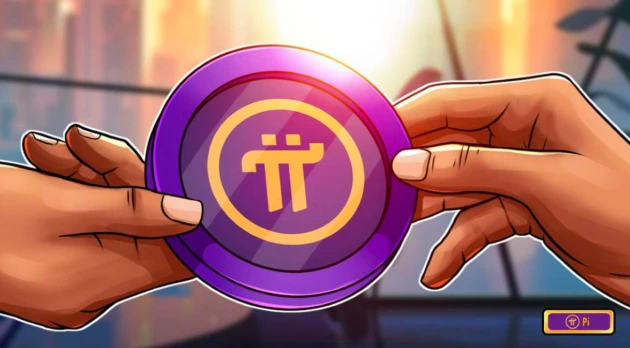It’s officially Hackathon season, crypto enthusiasts. The equally controversial and popular Pi Network is preparing for its next big move with the launch of its first Hackathon.
It’s a major step whose aim is to expand the Pi Network’s ecosystem and drive home fresh utility for the Pi Coin. Building on the momentum that started around Pi2Day which was celebrated on June 28, 2025, the network announced the start of the registration for the Pi Hackathon 2025 on Friday, August 15, aiming to incentivise developers into developing apps and boosting Mainnet app development with real-world use cases.
With the total prize of 160,000 Pi hanging in the balance, could this finally signify a turning point for the cryptocurrency?

All About the Pi Hackathon 2025
As a consequence of June’s Pi2Day’s app-building momentum, the Pi Network is now launching the first hackathon of the ecosystem after its Open Mainnet launch in February 2025. This hackathon is inviting and encouraging developers to design, build, and deploy meaningful decentralised apps (dApps), tools, and experiences that will empower the real-world utility and accessibility of the Pi coin. The objective? To attract more users and showcase the real-world use cases for the Pi coin, helping shape the entire ecosystem.
The hackathon, whose registration began on August 15, will officially run between August 21 and October 15, with a mid-course check session on September 19, with 160,000 Pi up for grabs in total prizes.
Developers have been encouraged to be creative and innovate based on real user needs, use AI tech to support the design and development of their apps, use the Pi App studio and Brainstorm app on early ideas, and reshape and redesign them into fully-featured apps, and build an open-source project using the Pi Open Source (PiOS) by taking advantage of community contributions.

Unlike other narrowly focused events, the Pi Hackathon 2025 features a broad and general open-ended theme, giving participants the freedom to design apps across a plethora of industries. The app can focus on any use case, from finance and tokenization to gaming and payments, as long as it follows and meets the provided Pi Network’s Mainnet listing requirements. By leaving the field wide open, the network hopes to spark broad creativity and bring in unique solutions that could not only increase adoption but also bring real utility to the Pi community as well as those who’ve never mined Pi.
Interestingly, the Pi Network might be working up to join the RWA (real-world asset) tokenization market, strengthening its role in the broader blockchain space. It’s fueled by the recent addition of the SDF (Stellar Development Foundation) to join the ERC-3643 Association, which is designed for “permissioned tokens” with in-built compliance rules. This move is expected to enable cross-chain interoperability, allowing compliant RWAs to move among blockchains, and possibly allowing Pioneers to access new asset classes while adhering to regulations.

Mixed Feelings?
Surprisingly enough, the announcement of the Pi Hackathon saw adverse feedback from the Pi community, or Pioneers, as they’re called. They harked back to the sudden halt in 2023’s monthly hackathons, anticipating a similar failure. Apart from the hackathon news failing to lift the community spirit, it did nothing for the price of the Pi coin either, even as the value slid over 1% even as the hackathon news was everywhere.
On the other side of the spectrum, analysts are pointed to some specific bullish drivers for the Pi coin in recent weeks. Firstly, there’s been heavy whale accumulation, with one particularly large investor reportedly buying a whopping 350 million Pi coins, even amidst all the market uncertainty. There are also strong technical setups that suggest a breakout rally, besides the fact that there’s growing speculation that major exchanges might soon be listing the Pi token.
However, the one piece of news that’s bolstered everyone is the speculation surrounding the second migration of the Pi coin, especially since the Pi Network team encouraged security measures. The process of Mainnet migration for the Pi Network encompasses transferring user balances and accounts from the “enclosed” or test Mainnet to the “live Mainnet.” For early Pi users, the first migration ended after years in February 2025. A migration unlocks the true utility of the Pi coins and enables their use across dApps and services.
In this case, the suggested second migration could be referring to the balances that haven’t been transferred yet. Specifically, it would include accounts that have only recently completed the Know Your Customer (KYC) verification and delayed referral mining bonuses. If that were to actually happen, it could possibly increase wallet participation and liquidity within the ecosystem, thus boosting its utility.

What Lies Ahead
Even though the Pi community hasn’t shown any visible excitement towards the Pi Hackathon, it’s certainly a chance for the Pi Network to prove its vision of decentralisation and accessibility. It’s more than just about prizes; it’s about exploring and showcasing what Pi coin can do for people who are outside of the crypto realm.
Even as the Pi network continues to fight misinformation and tries to expand its visibility, the hackathon is certainly ruffling feathers and inspiring developers to collaborate and shine a spotlight on meaningful projects. Whether or not it will prove to be a turning point for the Pi Network is something that still remains to be seen
In case you missed:
- Pi Day 2025: What Awaits The Pi Network on March 14th?
- The Pi Mainnet Launch – What It Heralds For The Pi Coin and Pioneers
- Here for the ‘Pi’: Pi Day 2 Updates for the Cryptocurrency
- Of ISO 20022 Standards, DeFi Testnet, and Clearing KYCs: What’s Happening With Pi Network?
- The Rise of AI-Driven Governance in India
- Are Cryptocurrencies Becoming an Asset Class?
- Let The Games Begin: All About Crypto Gaming
- A Beginner’s Guide to Cryptocurrency Trading in India – Part 1
- From Memecoin To Meaning
- A Beginner’s Guide to Cryptocurrency Trading in India – Part 2










